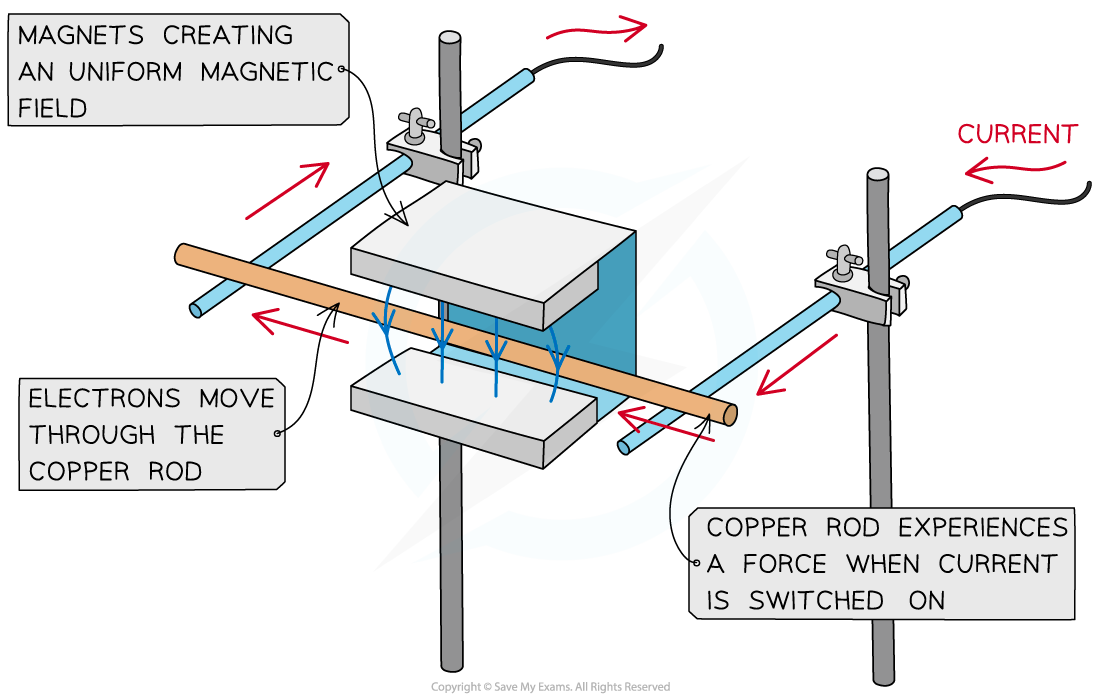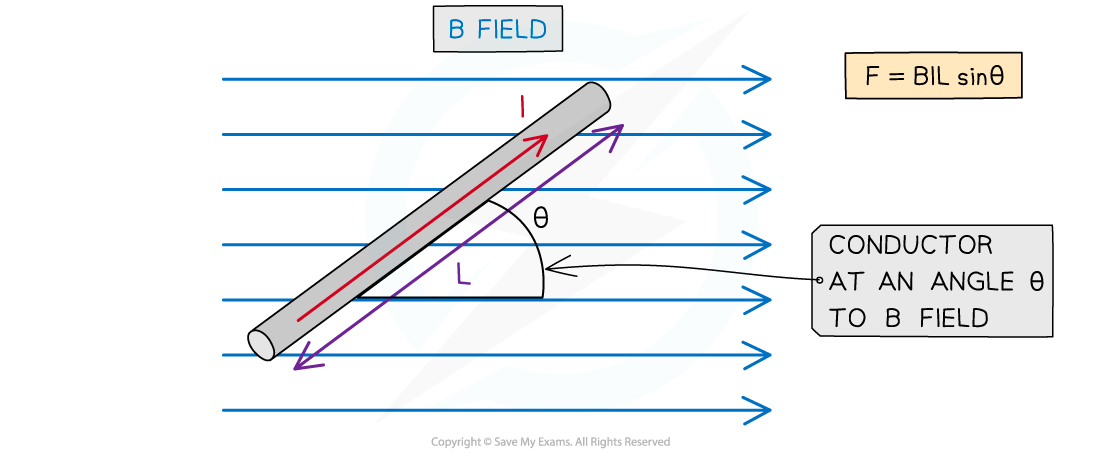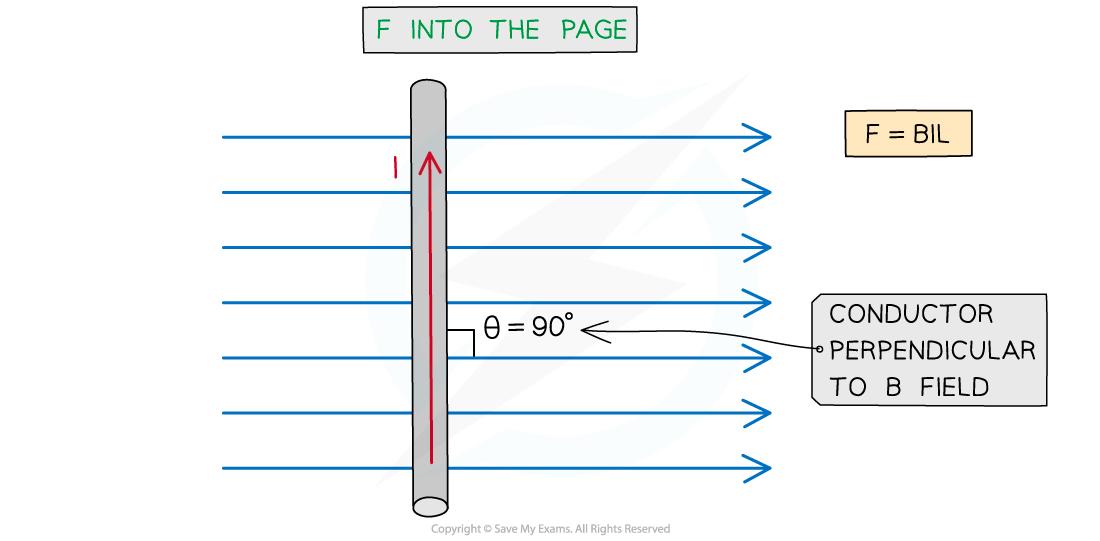Force on a Current-Carrying Conductor (OCR A Level Physics): Revision Note
Exam code: H556
Magnetic Flux Density
The magnetic flux density B is defined as:
The force acting per unit current per unit length on a current-carrying conductor placed perpendicular to the magnetic field
Rearranging the equation for magnetic force on a wire, the magnetic flux density is defined by the equation:
Where:
B = magnetic flux density (T)
F = magnetic force (N)
I = current (A)
L = length of the wire (m)
Note: this equation is only relevant when the B-field is perpendicular to the current
Magnetic flux density is measured in units of tesla, which is defined as:
A wire carrying a current of 1 A normal to a magnetic field of flux density of 1 T with a force per unit length of the conductor of 1 N m−1
To put this into perspective, the Earth's magnetic flux density is around 0.032 mT and an ordinary fridge magnet is around 5 mT
The magnetic flux density is sometimes referred to as the magnetic field strength
Worked Example
A 15 cm length of wire is placed vertically and at right angles to a magnetic field. When a current of 3.0 A flows in the wire vertically upwards, a force of 0.04 N acts on it to the left.
Determine the flux density of the field and its direction.
Answer:
Step 1: Write out the known quantities
Force on wire, F = 0.04 N
Current, I = 3.0 A
Length of wire, L = 15 cm = 15 × 10−2 m
Step 2: Write out the magnetic flux density B equation
Step 3: Substitute in values
Step 4: Determine the direction of the B field
Using Fleming’s left-hand rule:
F = to the left
I = vertically downwards (flow of conventional current)
therefore, B = out of the page
Force on a Current-Carrying Conductor
A current-carrying conductor produces its own magnetic field
An external magnetic field will therefore exert a magnetic force on it
A current-carrying conductor (e.g. a wire) will experience the maximum magnetic force if the current through it is perpendicular to the direction of the magnetic flux lines
A simple situation would be a copper rod placed within a uniform magnetic field
When current is passed through the copper rod, it experiences a force which makes it accelerate

A copper rod moves within a magnetic field when current is passed through it
The force F on a conductor carrying current I in a magnetic field with flux density B is defined by the equation:
Where:
F = magnetic force on the current-carrying conductor (N)
B = magnetic flux density of external magnetic field (T)
I = current in the conductor (A)
L = length of the conductor in the field (m)
θ = angle between the conductor and external flux lines (degrees)
This equation shows that the magnitude of the magnetic force F is proportional to:
Current I
Magnetic flux density B
Length of conductor in the field L
The sine of the angle θ between the conductor and the magnetic flux lines


Magnitude of the force on a current carrying conductor depends on the angle of the conductor to the external B field
The maximum force occurs when
This means
and the conductor is perpendicular to the B field
This equation for the magnetic force now becomes:
The minimum force (0) is when
This means
and the conductor is parallel to the B field
It is important to note that a current-carrying conductor will experience no force if the current in the conductor is parallel to the field
Worked Example
A current of 0.87 A flows in a wire of length 1.4 m placed at 30o to a magnetic field of flux density 80 mT.
Calculate the force on the wire.
Answer:
Step 1: Write down the known quantities
Magnetic flux density, B = 80 mT = 80 × 10−3 T
Current, I = 0.87 A
Length of wire, L = 1.4 m
Angle between the wire and the magnetic flux lines, θ = 30o
Step 2: Write down the equation for the magnetic force on a current-carrying conductor
Step 3: Substitute in values and calculate
Examiner Tips and Tricks
Remember that the direction of current is the flow of positive charge (i.e. conventional current) and this is opposite to the flow of electrons.

Unlock more, it's free!
Did this page help you?